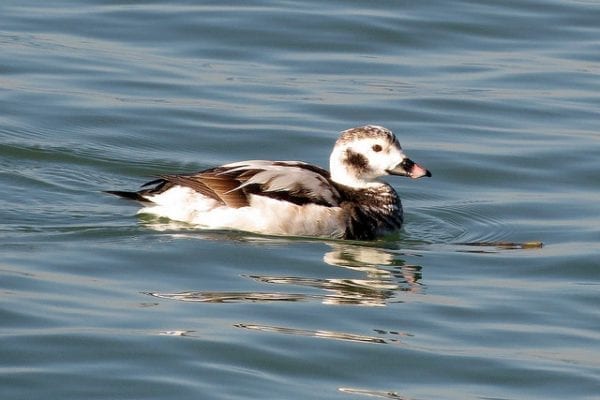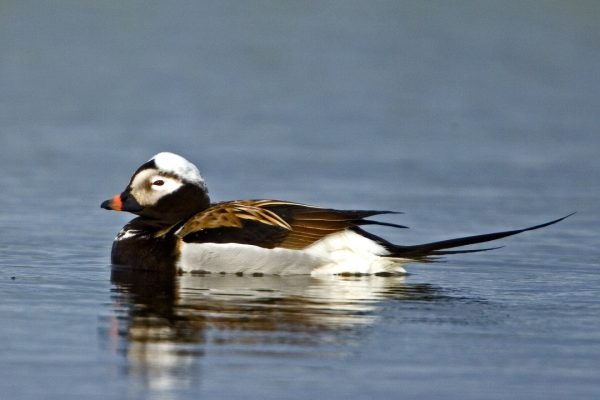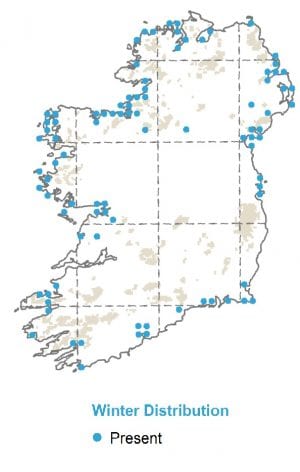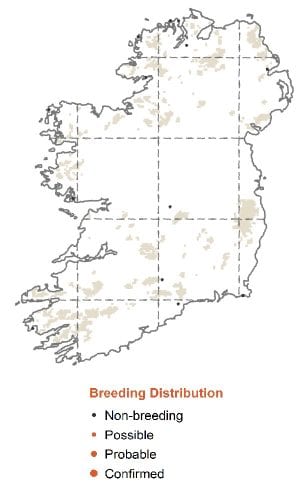
Long-tailed Duck
| Irish Name: | Lacha earrfhada |
| Scientific name: | Clangula hyemalis |
| Bird Family: | Ducks |
red
Conservation status
Conservation status
Status
Winter visitor - it is likely that a substantial proportion of the birds that occur in Ireland and Britain come from the population breeding in Greenland/Iceland.
Identification
Small brown, black and white duck, with rounded head and short stubby bill. Central tail feathers of male elongated. Complex plumages, but in winter, males with white upper mantle, scapulars, head and neck. Sides of lower part of the head with a dark patch (autumn) and pale grey-brown with chestnut lower rim at the base of the black patch (winter). Bill mostly dull grey (winter) or black with pink patch (late winter). Females with no elongated tail feathers, colours duller, narrower patches on side of head, which are less distinct in winter.
Voice
Male with far-carrying nasal yodel 'ow ow-owdelee, ow-owdelee'.
Diet
During the breeding season, they feed on a variety of animal and occasionally plant life. Their winter diet differs considerably, and consists, predominantly of molluscs and crustaceans, including cockles, shrimps and crabs, and also small fish and very occasionally grain from distillery outfalls.
Breeding
Long-tailed Ducks nest on open tundra pools, hill lakes and rivers, all with little cover. They also breed near the sea, and occasionally in rocky fjord country.
Wintering
Seem to prefer offshore waters adjacent to rocky coastline.







